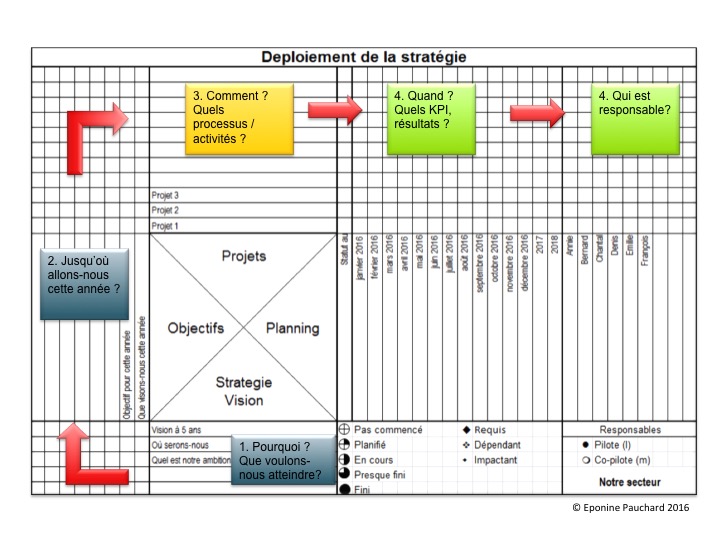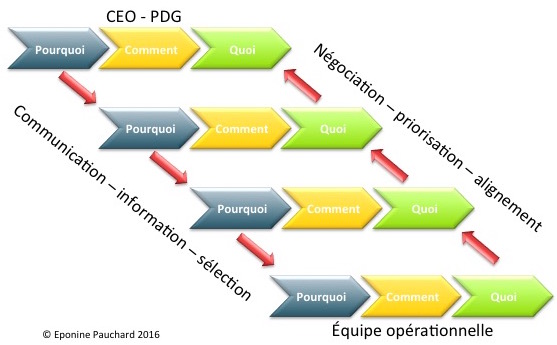After having explained the philosophy and the main principles of Hoshin Kanri, I propose two tools to help you make the most of it. The X-matrix is a tool that links each project or activity to the goals and vision. It is used to keep the focus and choose the right levers to achieve results.
Catchball ensures that goals are shared at all levels. It is a participatory process that accompanies the construction of the X-matrix. It ensures team alignment, prioritization of activities, integration and understanding of targets and thus mobilizes everyone around the objective.

The X-matrix: linking projects to objectives

Here is the diagram of the X-matrix, and its contents:The X-matrix is simple to construct. You start at the bottom, by writing down your vision: this is level 1 of planning. Then, indicate what you are aiming for in the shorter term, which corresponds to level 2, 3 or 4 depending on your position in the organization. Finally, break down each of the objectives into projects or actions, which puts you at level 4 or 5 of the planning process. The approach is to start with the strategic vision, go through the tactical levels and end with the operational aspects.
The hardest part is defining the vision and choosing the right goals and projects. We tend to always want to do too much. If the vision must be ambitious, the objectives and projects must be realistic.
After your first planning exercise, you will have to deselect goals. Indeed, each one will need several projects to be reached and your resources are limited. This is the most difficult part of the Hoshin Kanri process. You should choose three to five goals maximum and define them in a SMART way.
Vision and goals are part of your strategy. They tell you where you want to go: this is the Why. Projects are the tactical actions and really the path you are going to take to get there: it is the How. Finally, the resulting action plans, with their timelines and deliverables, are the vehicle: the What.
Catchball: participatory goals
One of the ways to choose the right goals, and then the right projects, is to engage your teams. Thus, Hoshin Kanri is based on frequent exchanges between the different levels of the organization.
The diagram below is a good representation of the dynamics to be put in place.

Senior management defines its vision and shares it with its teams, including what it wants to put in place to achieve it. The team takes ownership of the information, and then builds its own target and action plan. It then provides feedback to higher management levels to negotiate and prioritize activities. The idea is of course to do everything in a dynamic way. The initial launch is a bit more demanding. But once the mechanics are in place, the whole thing can be adjusted every three months, to adapt to the fluctuating realities of the market in which the company operates.
